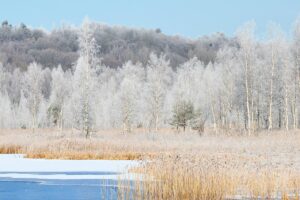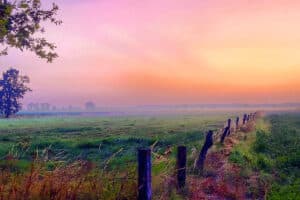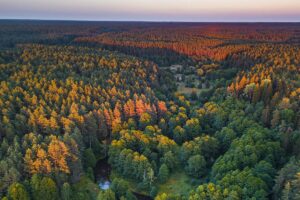I learned the word “choicy” many years ago in southern West Virginia. I understood it to mean a person who was a bit choosier — more careful in deciding among alternatives — than simply choosy, which is pretty choicy to start with.
Choicy is a good standard to apply to spending large sums of money for real estate. It also helps in deciding spouses and cigars, both of which benefit from careful aging.
Several weeks ago I was asked to help in choosing from a menu of three properties. The buyers could afford to spend about $750,000 in an area about a 90-minute drive from a major city.
Choice A was 40 acres of hilly woods with a relatively new 4,000-square-foot, post- and-beam second home. The land had little value other than privacy protection and woodland recreation. We estimated that about 75 percent of the property’s market value was in the house and three-car detached garage.
The buyers liked the house—lots of windows, granite counters, spacious deck. They could move right in, and friends could be invited for a celebratory cookout on July 4th. The seller hinted that he could sweeten the deal with his ATV.
Choice B was about 100 acres with a one-story, 2,000-square-foot brick ranch from the 1950s. It was in good shape, but it would not be contemporary without extensive work. It had two smallish bathrooms, a functional-but-not-upgraded kitchen, large living-dining room with picture window, knotty-pine den and small closets. A swimming pond was behind the house.
The back 60 acres was steep mountainside with some old logging roads. Shaley soil and a south-facing aspect made it a not-very-productive timber-growing site. The next possible timber sale was at least five or six decades off. A stream separated the mountain from the front of the property. The house was built close to a busy two-lane highway. Most of the open acreage between the road and the stream was poor-but-useable pasture in a floodplain.
Choice C was 440 acres of woods that had been selectively timbered about 15 years ago. The logging roads needed to be improved for normal traffic. As a fee property, it included all minerals. A 500-foot-long, deeded, right-of-way easement accessed about 400 acres, with the remainder lying separate on the other side of a public road. An electric line could be run in the right of way.
The topography was a mix of hilly-to-steep mountain land that rose to about 3,000 feet. It was well-suited for timber, wildlife and recreation. Several openings were scattered around that had nice northwest/west-facing views. Two small streams drained it.
The buyers leaned so heavily toward Choice A that I thought that they had already fallen over.
A sung to them because it was a turnkey deal. Nothing had to be torn down, put up or thought through. They pictured themselves in a house that fit their sense of themselves. My friend saw himself astride a new tank-sized lawnmower…with attachments, cutting his new acre of grass. Mainly, he liked the idea of bombing around on an ATV, sort of like Marlon Brando with two extra wheels. He did not share this vision with his wife.
B was their second choice, because it could be occupied immediately even though both sniffed snootily at its Ozzie-and-Harriet vibes. They had fallen hard for the pond, which trumped the house, which they finally allowed “might be turned into something decent.” The pond kept coming up in their conversation.
C scared them. “What would we do with a mountain of trees? There’s no place to live right now.”
When I asked what was their most important objective in buying property, they agreed that it was “investment appreciation.” “Of the three,” I asked, which do you think will appreciate fastest?” “The new house, of course.”
I suggested they visit their courthouse and track the tax-assessed values for the three properties and similar properties over the last 30 years. They also tracked appreciation over seven reassessments for other parcels of open land, wooded land and improvements separately.
While all property had been reassessed higher in each round, the most economically productive dollar from an investment point of view was in “raw” land. By itself, open land had appreciated more than land with improvements, by at least two to one. That’s not what the buyers expected to find.
“But we can’t live there,” they said. “That’s important.”
“How many days do you think you would spend on either A or B?” I asked. The answer was only six or seven weekends a year, depending on work and the kids’ schedules.
“But we won’t have the money to build if we spend it all on land.”
The money for a new $200,000, 1,600-square-foot house and pond lay in the separate 40 acres across the road and in about 100 acres of the remaining 400 that they could readily sell in one to three lots. None of the sale acreage was important to their future use of the land. I suggested that they wait a year before selling so as to get capital-gains treatment on the sale. By the time they were ready for retirement, the woods would be ready for another selective cutting that would net a good deal of cash.
They were not tent people, but they could see themselves “roughing it” in a used RV for the first two years.
C’s last hurdle was emotional. They liked A’s house and B’s pond. What was to like about C’s woods?
“Spend a weekend walking around up there,” I suggested. “You’ll either connect or you won’t.”
I’ve always found hilly woods to have more stuff going on than open land; I’m sure that’s not true of everyone. I’m also a shade person; I think beaches should be left for umbrellas and sand crabs. Some reasonable people — and all beachies — will think I’m an idiot.
I prefer more land and less house when there’s a choice. I’ve found that people who move out here always seem to want to add to their land base. It always seems easier to remodel or build a house than to acquire adjoining property. It’s also easier to sell unwanted land from a bigger-than-needed original purchase than to buy a neighbor’s land, especially when it’s not for sale.
Bigger acreages are almost always cheaper than smaller parcels on a per-acre basis. This “rule” allows a new owner to sell unwanted parcels for more than the per-acre purchase price just paid. It’s common to find 100 acres selling at $1,000 per acre with a one-acre lot carved from this tract, selling for $10,000, or more.
The buyers proved more choicy than I anticipated. They recognized that their instincts drew them to the “easiest” deal, which was not the one that best matched their objective. They found more flexibility in themselves, more adventurousness, than they thought they had.
When I suggested that they really needed a four-wheel-drive ATV to look after 300 acres of woods, trump changed.
This content may not be used or reproduced in any manner whatsoever, in part or in whole, without written permission of LANDTHINK. Use of this content without permission is a violation of federal copyright law. The articles, posts, comments, opinions and information provided by LANDTHINK are for informational and research purposes only and DOES NOT substitute or coincide with the advice of an attorney, accountant, real estate broker or any other licensed real estate professional. LANDTHINK strongly advises visitors and readers to seek their own professional guidance and advice related to buying, investing in or selling real estate.









Add Comment